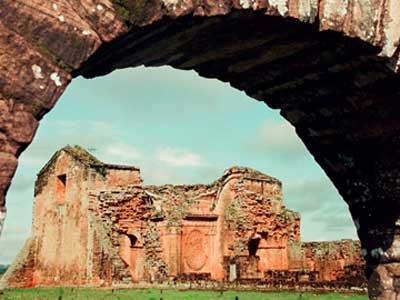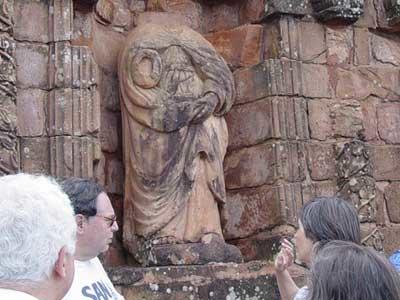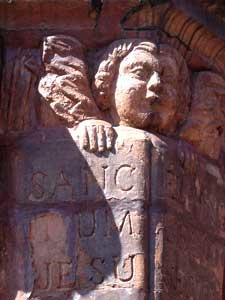La Santísima Trinidad, established in 1706 and completed in 1712, was one of the 30 missions established by the Jesuits in the region in the 17th and 18th centuries in what is now Paraguay, Brazil, and Argentina. These missions were designed to convert the indigenous Guaraní to Christianity and to manage Spanish economic interests in the region. Following the Guaraní War in the 1750s and the expulsion of the Jesuits from Spanish lands, the missions were abandoned. In the decades that followed, many were destroyed or abandoned, while others became rich sources for building materials. La Santísima Trinidad del Paraná, now an archaeological ruin, was inscribed on the UNESCO World Heritage List in 1993. Its well-preserved complex includes a plaza, main church and small church, belfry, college and cloister, housing, gardens, and workshops.
2004 and 2010 World Monuments Watch
Despite its significance and recognition, the mission faced problems of structural instability and imminent collapse. In 2004, La Santísima Trinidad was included on the World Monuments Watch. With assistance from American Express, WMF contributed to the development of a site management plan and provided conservation training related to work at the site. WMF’s work in the region allowed the Guarani missions to be looked at as a group and a detailed manual was completed enabling conservators to provide training and expertise to other Guarani mission in Argentina, Brazil and Paraguay. To promote continued stewardship of the mission, La Santísima Trinidad was included on the World Monuments Watch again in 2010.
The Jesuits transformed the architecture, lifestyle, and culture of the areas in South America in which they settled. La Santísima Trinidad del Paraná, the very last to be built, represents the most ambitious of their settlements. It was designed by the noted Jesuit architect Jean Bautista Primoli and is in a more complete state than many in the region.








